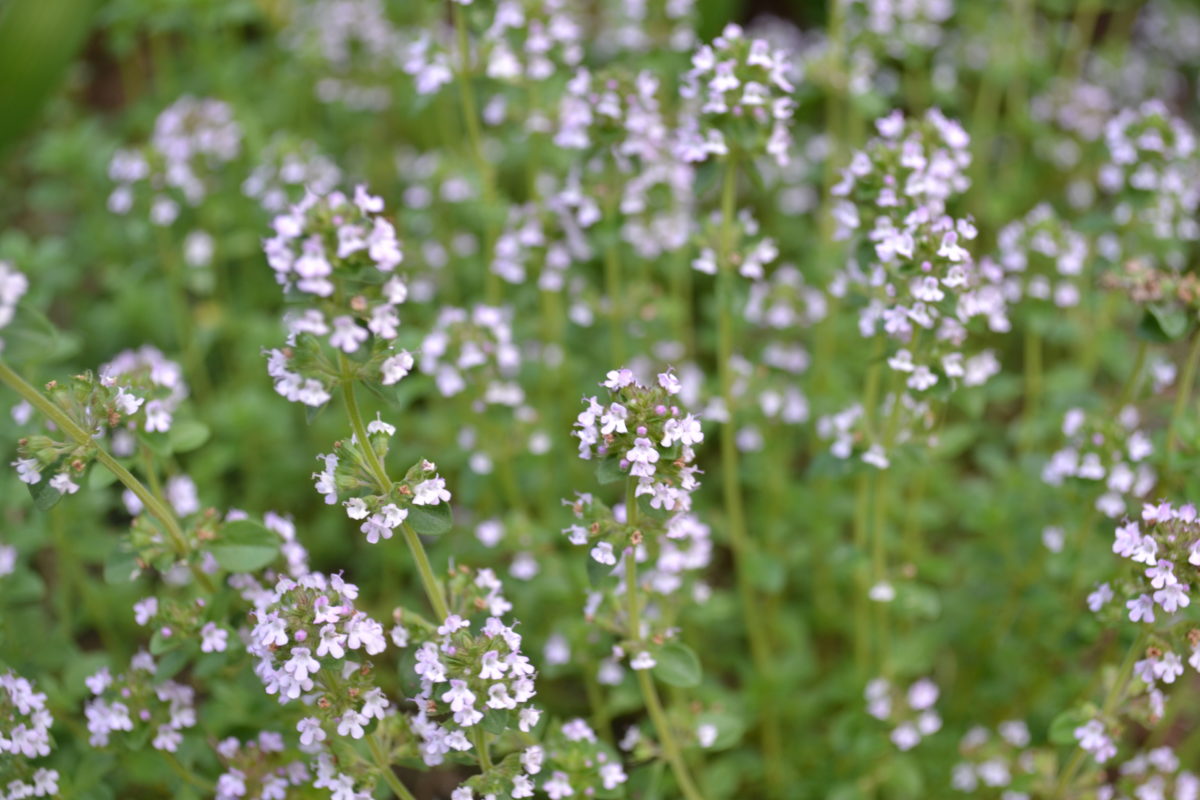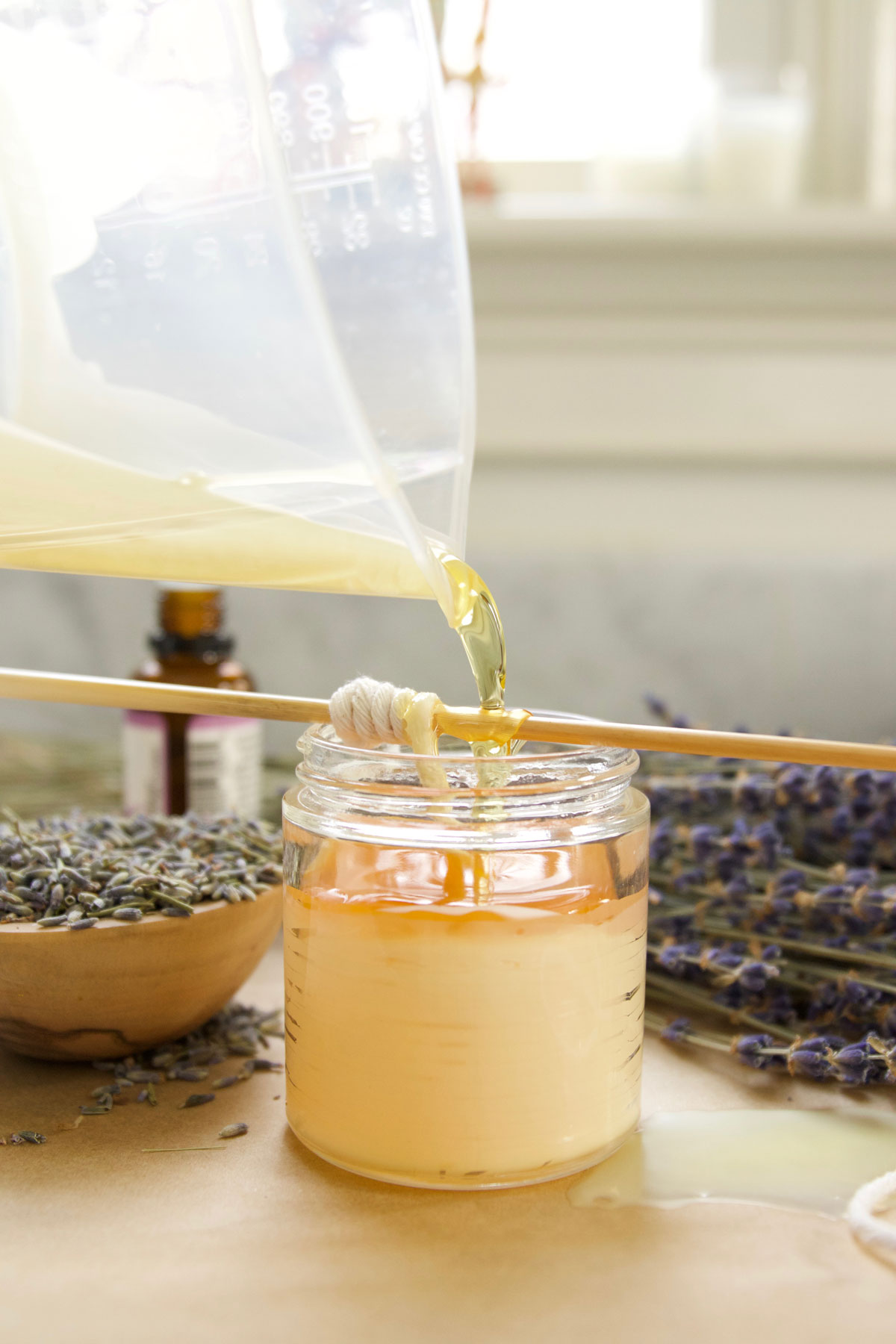
DIY Natural Citronella Candles
We have finally started to feel the warmth of summer. It was 80 degrees Fahrenheit here in the Midwest yesterday, and you can bet we spent the better half of the day outdoors. We welcomed summer with a playful game of baseball, refreshing strawberry lemonade, and s’mores roasted over a bonfire. All the while, our homemade citronella candles twinkled in the background keeping the mosquitoes away.
With school closed and our regular weekly activities at an end, we naturally find ourselves enjoying the woodlands and hillside around our home more often. As the afternoons stretch into the twilight hours, the rhythmic hums and chirps of the insect world flood the air—summer has arrived.
It’s a familiar chorus, and one I truly long for during the remarkable quietness of winter months. Yet, still, these rhythmic hums can be unsettling for many because it most certainly implies a notorious creature of the night is back. Like the blood-sucking vampires that haunt the scenes of many summer blockbusters, mosquitoes soar the skies in search of their next victim. Luckily, the herbalist in me has learned how to repel mosquitoes naturally so my family and I can enjoy every outdoor gift that summer has to offer.

Even the simplest of herb gardens offers an abundance of uses beyond the culinary arts, including herbs that help care for our skin, support overall wellness, and even help to clean our homes. Some herbs, in fact, do it all!
Many herbs also contain the unique ability to attract and repel insects, including mosquitoes.
How does it work? Many plants send off signals to attract insects that benefit the plant while simultaneously outputting signals to keep harmful insects away. This natural phenomenon is very effective because insects rely on smell and taste to locate their next meal.
Herbs That Repel Flies and Mosquitoes
Lemongrass (Cymbopogon spp., especially C. citratus and C. flexuosus).

This delightfully aromatic, tall perennial grass is native to India. It’s commonly used in the form of lemongrass (Cymbopogon spp.) and citronella essential oils, which are both distilled from plants in the lemongrass family and are used to keep mosquitoes away (Duke et al., 2002; Shah et al., 2011). Each is popularly used in candles as a natural mosquito repellent with a refreshing aroma (Pereira, 1854).
Eucalyptus (Eucalyptus spp.)

Native to the Pacific Southwest and a favorite meal of the koala bear, eucalyptus (Eucalyptus spp.) makes up more than three-quarters of vegetation in Australia. The natural aromatic oils of the plant have been well documented to repel insects, including the pesky mosquito. The blue gum variety (E. globulus) was successfully used as a mosquito repellent in the 19th century during a malaria epidemic (Kowalchik et al., 1987).
Lavender (Lavandula spp.)

Native to the Mediterranean region and widely grown in the United States, lavender (Lavandula spp.) has been used since the Middle Ages to deter moths from linens (Kowalchik et al., 1987). Lavender’s strong scent is part of why it’s able to help repel flies and mosquitoes in addition to killing lice and parasites (Berger, 1998).
Thyme (Thymus vulgaris)

The herb’s genus name, Thymus, has been linked to the Greek word for courage as well as the word meaning “to fumigate.” Both are fitting as thyme (Thymus vulgaris) is invigorating to the senses and was burned by the Greeks to chase off stinging insects from the home (Kowalchik et al., 1987). The flowers of both thyme and lavender were also used to preserve linens from insects, and are still used to this day in the form of herbal linen sachets.
Rosemary (Salvia rosmarinus, previously known as Rosmarinus officinalis)

Native to the hills along the Mediterranean, rosemary (Salvia rosmarinus) is a member of the mint family. Evergreen in many climates, rosemary is loved for its low maintenance needs and pest-repelling abilities. Cockroaches and mosquitoes alike despise the potent scent of rosemary, and it is also a common addition to linen sachets.
Lemon Balm (Melissa officinalis)

By simply brushing your fingers on the leaves of lemon balm (Melissa officinalis), you’ll smell the scent of both lemon and mint. This unique aroma—paired with the herb’s ability to grow abundantly in nearly any garden—makes it a popular choice for many herb gardeners.
Lemon balm’s genus name, Melissa, is derived from a Latin word meaning “honey bee.” As the name suggests, bees adore lemon balm’s tiny, sweetly scented flowers. It is reputed to repel other insects (Kowalchik et al., 1987), so we toss a few leaves in our firepit before roasting marshmallows to keep bugs away. To help deter ants, you can also brush the leaves of lemon balm onto your patio table before sitting down for a meal.
Sage (Salvia officinalis)

The lemony, camphor-like leaves of sage (Salvia officinalis) are cultivated throughout the world. Most used in the culinary arts for a traditional Thanksgiving dinner, sage is also helpful as an insect repellent in the garden. Sage leaves steer away flies and moths, yet attract honey bees (Kowalchik et al., 1987).
Tansy (Tanacetum vulgare)

Popular today as an ingredient for natural skincare, this flowering fern-like herb was used by colonial cooks as an insect repellent. American colonists hung plants in the windows of their kitchens to stop flies from entering, and they rubbed tansy (Tanacetum vulgare) leaves on their tabletops to deter ants (Kowalchik et al., 1987). To this day, many people still plant tansy in pots near their doorway to discourage flies from entering the home.
Peppermint (Mentha × piperita)

Recognized for its strong, unique aroma provided by its high menthol content, peppermint (Mentha x piperita) has been planted in gardens for ages to help repel fleas, aphids, and other pests. Europeans have long used mints, including peppermint, to help keep mice and other rodents out of the household or farm (Kowalchik et al., 1987).
Do Citronella Candles Really Work?

Some citronella candles have a bad rap as being only decorative and not working very well. However, in my experience, homemade and natural citronella candles are far more effective than the “citronella-scented” candles that are commonly sold in stores. Their effectiveness comes from using real ingredients, such as citronella essential oil.
What is citronella oil? Citronella essential oil is a naturally occurring insect and animal repellent distilled from two lemongrass varieties (Bond et al., 2013), Cymbopogon nardus and C.winterianus. Citronella essential oil is steam distilled from the leafy parts of the plant and is popular for its use in outdoor candles.
In basic terms, citronella oil repels targeted pests rather than killing them. It works by masking scents that attract insects, making it difficult for insects to locate you, their dinner (Bond et al., 2013).

Citronella candles for outdoor mosquito repellent are best when made with real citronella oil and other natural ingredients. Beeswax, for example, is a perfect choice for outdoor candles because it burns much slower than other candle wax types. Beeswax blocks and pastilles are both great for making natural citronella candles. You can also add coconut oil or coconut wax to beeswax candles for a more consistent burn and better scent throw.
As a general rule, the slower a wax burns, the wider the wick you’ll need. I choose wood wicks harvested from sustainable sources for these homemade citronella candles, not only for their size but because I also adore their crackling sound!
If you use a glass canning jar for your candle container,then you can keep the lid closed (and the rain out!) when they’re not in use. However, if you don’t have canning jars on hand, then you can adapt this candle recipe for any container using a candle wax calculator.

Natural Citronella Candle Recipe
If you and your family are planning on spending a lot of time outdoors this season, make these simple DIY citronella candles to keep your backyard barbecues and outdoor play mosquito-free! This recipe will make four candles.
4 8-ounce glass jars with lids
8 wood wicks
4 wood wick clips
4 wood wick sticker tabs
Kitchen scale
20 ounces sustainably sourced beeswax
8 ounces coconut oil
2 tablespoons lemongrass essential oil (Cymbopogon spp.)
2 tablespoons citronella essential oil (Cymbopogon nardus or C. winterianus)
1 tablespoon lavender essential oil (Lavandula spp.)
1/2 teaspoon dried lavender (Lavandula spp.) flower
1/2 teaspoon dried lemon balm (Melissa officinalis) aerial parts
1/2 teaspoon peppermint (Mentha x piperita) leaf
- Place a wick sticker tab in the center base of each glass jar. Place two wooden wicks in each wick clip and adhere them to the wick sticker tab.
- Use a kitchen scale to measure 20 ounces of beeswax.
- To safely melt the wax, add the beeswax to a heat-proof container or candle-melting pitcher and place the pitcher filled with wax inside a large saucepan filled with about 2 inches of water. Using the double boiler method, heat on medium to low heat. Stir often with a heat-resistant silicone spatula or wooden spoon until the wax is completely melted.
- Remove the pitcher or double boiler from the heat after melting.
- Scoop 8 ounces of coconut oil into the melted wax and stir until blended.
- Add the essential oils to the coconut beeswax blend and mix thoroughly.
- Carefully pour the scented wax into each prepared mason jar.
- Let each citronella candle cool for 30 minutes to 1 hour before trimming the wicks. Cut wood wicks to approximately ⅛-inch above the wax for the best burn rate.
- Finally, sprinkle the dried herbs (lavender, lemon balm, and peppermint) onto the top of the cooled wax as a decorative and aromatic finish.
Notes:
- Give your citronella candles at least 3 days to cure before burning. One to two weeks is even better if you can wait longer.
- Beeswax is nearly impossible to clean up, so consider reserving special pans and utensils for projects involving beeswax. To help with cleanup, wipe as much beeswax off your materials as possible before running them under hot soapy water.
- Because this recipe calls for large quantities of essential oil, do your research beforehand and try to purchase supplies from companies that practice sustainable harvesting.
In Conclusion,
There are many garden herbs to keep your home and dining areas pest free (picnics included)!
The simple presence of plants, such as sage and lemongrass, are often enough to help keep insects away. And many useful plants can be rubbed, burned, or put to use in the form of citronella candles when you want to provide ambiance as well as insect protection.

REFERENCES
Berger, J.L. (1998). Herbal rituals. New York, NY: St. Martin’s Press.
Bond, C., Buhl, K., & Stone, D. (2013). Oil of citronella general fact sheet. National Pesticide Information Center, Oregon State University Extension Services. Retrieved from http://npic.orst.edu/factsheets/citronellagen.html
Duke, J.A., Bogenschutz-Godwin, M.J., du Cellier, J., & Duke, P.K. (2002). CRC handbook of medicinal spices. Boca Raton, FL: CRC Press.
Pereira, J. (1854). The elements of materia medica and therapeutics (3rd ed., Vol. 2). Retrieved from http://digital.ub.uni-duesseldorf.de/vester/content/pageview/1793435?query=lemongrass
Kowalchik, C., Hylton, W.H., & Carr, A. (1987). Rodale’s illustrated encyclopedia of herbs. Emmaus, PA: Rodale Press.
Shah, G., Shri, R., Panchal, V., Sharma, N., Singh, B., & Mann, A.S. (2011). Scientific basis for the therapeutic use of Cymbopogon citratus, stapf (lemongrass). Journal of Advanced Pharmaceutical Technology and Research, 2(1), 3-8. https://doi.org/10.4103/2231-4040.79796








